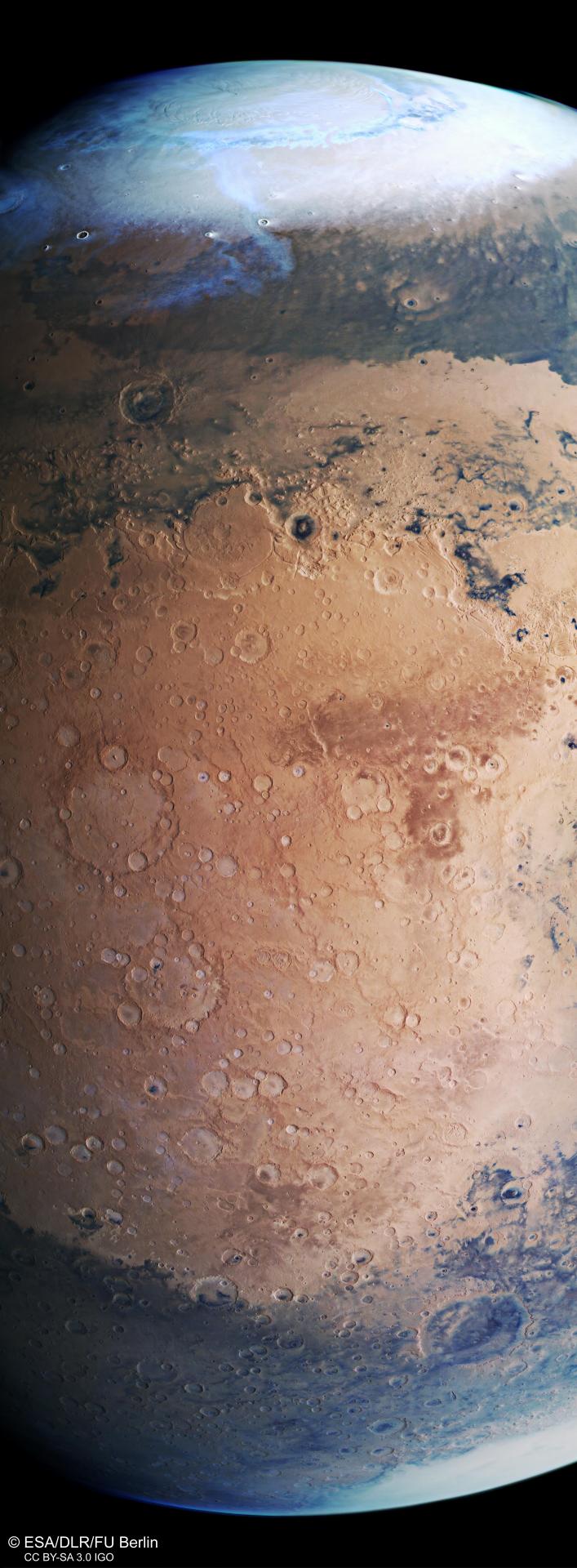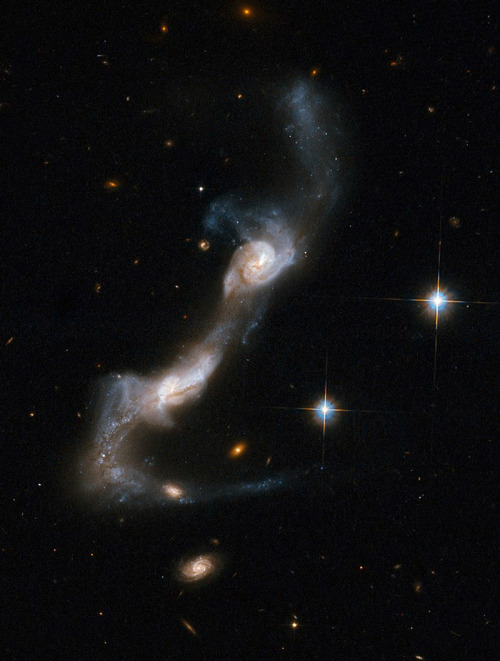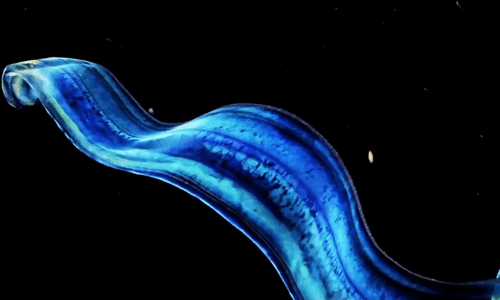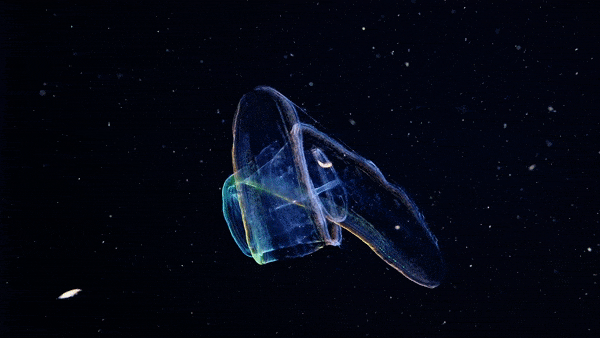L1527 IRS - Protostar

L1527 IRS - Protostar
Stars form when bodies of dust and gas create enough mass to create a gravitational effect that's able to then pull in more gas, the process continues and the mass increases until the pressure at the centre is sufficient for fusion to begin.
There's many examples of protostars, in fact back in 2012, NASA’s Spitzer Space Telescope focused in on L1527 IRS, believed at the time to be the youngest forming star ever found.

Recently, the JWST re-visited this protostar, and the title image was the result.
The forming star cannot be visually spotted, but is thought to be around 20-40% the mass of our own Sun already.

If you look closely, you can see there's a dark patch in the centre, this is actually the accretion disk around the newly formed star, what is left over after the formation, may go on to form the planets, in fact, they may be actually starting to be created already, as recent evidence does point to planets being born around the same time as the star does in many cases.
The protostar is only 450 light years from Earth in the Constellation of Taurus, and is thought to be around 100,000 years old, a blink of an eye in the life of a star, particularly of this mass.
More Posts from Ad-astra-affecte-spe and Others

Mars, as seen by ESA's Mars Express satellite

shit man this got me emotional

Cosmic Dance of Spiral Galaxies: Arp 238

NGC 2244, Within the Rose


Messier 45: The Pleiades
Nick Fritz on Instagram

The Milky Way arching over Lake Mungo, Australia // John Rutter









The Venus girdle (Cestum veneris) is a comb jelly in the family Cestidae. The colorless species are transparent when suspended in water, except for their iridescent rows of comb plates. In other words, they majestic as fuck. Love to sea it 🌊
-
 akheloisthemoon liked this · 1 year ago
akheloisthemoon liked this · 1 year ago -
 interdimensionalburnout liked this · 1 year ago
interdimensionalburnout liked this · 1 year ago -
 internmarce reblogged this · 1 year ago
internmarce reblogged this · 1 year ago -
 preciouspeacefulfragileexistence reblogged this · 1 year ago
preciouspeacefulfragileexistence reblogged this · 1 year ago -
 iplaythebassoon liked this · 2 years ago
iplaythebassoon liked this · 2 years ago -
 pluralzalpha reblogged this · 2 years ago
pluralzalpha reblogged this · 2 years ago -
 ad-astra-affecte-spe reblogged this · 2 years ago
ad-astra-affecte-spe reblogged this · 2 years ago -
 theradiodemon7 liked this · 2 years ago
theradiodemon7 liked this · 2 years ago -
 keith--akira--kogane liked this · 2 years ago
keith--akira--kogane liked this · 2 years ago -
 noisypaintersong reblogged this · 2 years ago
noisypaintersong reblogged this · 2 years ago -
 georg0 reblogged this · 2 years ago
georg0 reblogged this · 2 years ago -
 sweetpartysportsbasketball liked this · 2 years ago
sweetpartysportsbasketball liked this · 2 years ago -
 granger-05 liked this · 2 years ago
granger-05 liked this · 2 years ago -
 hisveiz reblogged this · 2 years ago
hisveiz reblogged this · 2 years ago -
 denabcitadel reblogged this · 2 years ago
denabcitadel reblogged this · 2 years ago -
 denabcitadel liked this · 2 years ago
denabcitadel liked this · 2 years ago -
 tinynightmarewasteland liked this · 2 years ago
tinynightmarewasteland liked this · 2 years ago -
 thestarsarebrighter liked this · 2 years ago
thestarsarebrighter liked this · 2 years ago -
 georg0 liked this · 2 years ago
georg0 liked this · 2 years ago -
 66stuart liked this · 2 years ago
66stuart liked this · 2 years ago -
 poisoningpigeonsinthepark reblogged this · 2 years ago
poisoningpigeonsinthepark reblogged this · 2 years ago -
 spaeccadet reblogged this · 2 years ago
spaeccadet reblogged this · 2 years ago -
 floweryrings reblogged this · 2 years ago
floweryrings reblogged this · 2 years ago -
 floweryrings liked this · 2 years ago
floweryrings liked this · 2 years ago -
 piranha1 liked this · 2 years ago
piranha1 liked this · 2 years ago -
 gideonlaog reblogged this · 2 years ago
gideonlaog reblogged this · 2 years ago -
 fiiyve reblogged this · 2 years ago
fiiyve reblogged this · 2 years ago -
 backatthebein liked this · 2 years ago
backatthebein liked this · 2 years ago -
 the-yearning-astronaut reblogged this · 2 years ago
the-yearning-astronaut reblogged this · 2 years ago -
 kloverigel liked this · 2 years ago
kloverigel liked this · 2 years ago -
 nightingaleflora liked this · 2 years ago
nightingaleflora liked this · 2 years ago -
 pluvi0u-io reblogged this · 2 years ago
pluvi0u-io reblogged this · 2 years ago -
 pluvi0u-io liked this · 2 years ago
pluvi0u-io liked this · 2 years ago -
 thehalpal liked this · 2 years ago
thehalpal liked this · 2 years ago -
 cylon13 reblogged this · 2 years ago
cylon13 reblogged this · 2 years ago -
 cylon13 liked this · 2 years ago
cylon13 liked this · 2 years ago -
 gothmonsteraddict liked this · 2 years ago
gothmonsteraddict liked this · 2 years ago -
 brandon1997 liked this · 2 years ago
brandon1997 liked this · 2 years ago -
 martian-messier liked this · 2 years ago
martian-messier liked this · 2 years ago -
 stabled reblogged this · 2 years ago
stabled reblogged this · 2 years ago -
 petriach liked this · 2 years ago
petriach liked this · 2 years ago -
 lenocturnefan liked this · 2 years ago
lenocturnefan liked this · 2 years ago

★•Astronomy, Physics, and Aerospace•★ Original and Reblogged Content curated by a NASA Solar System Ambassador
204 posts

